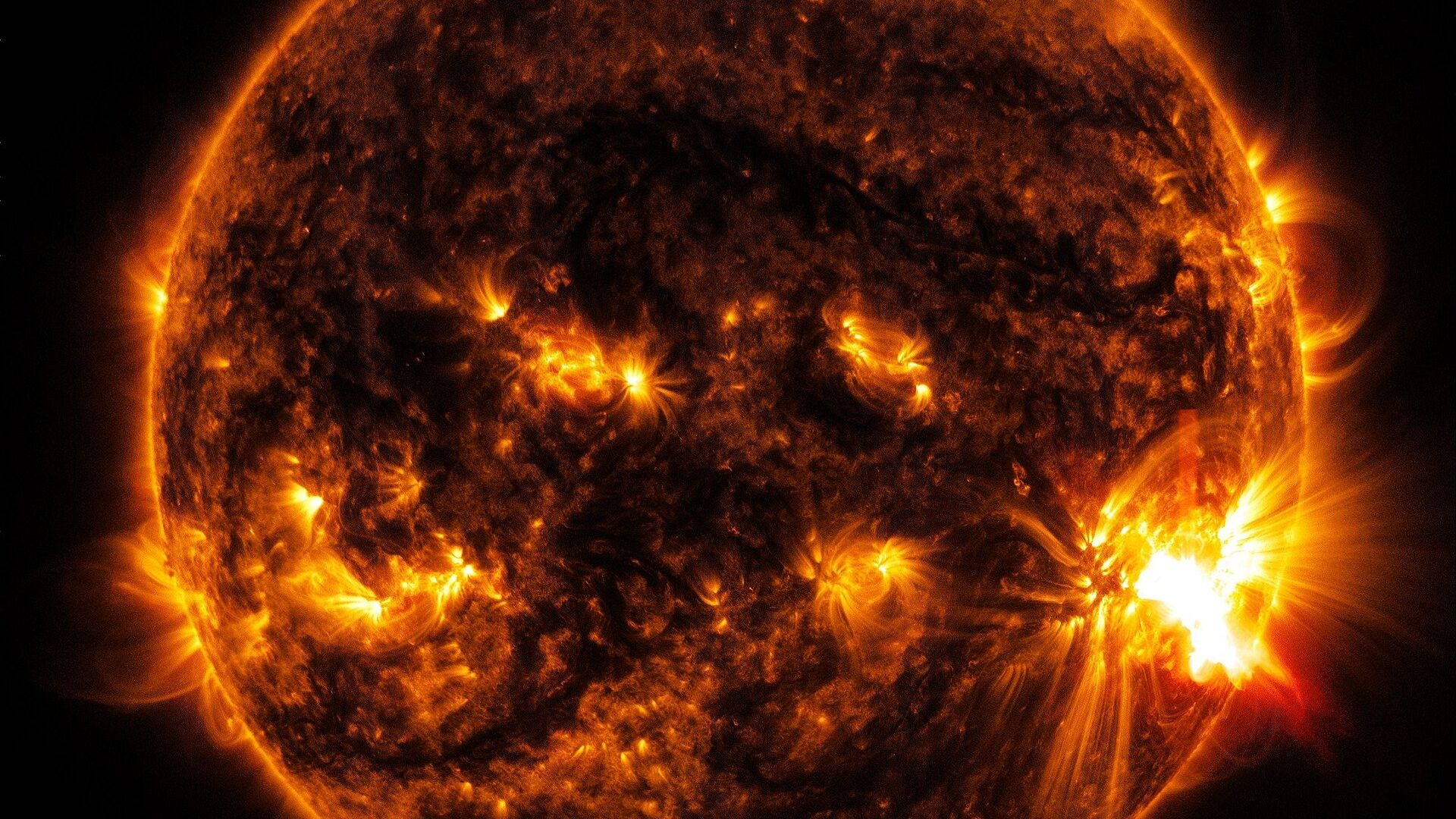https://sputnikglobe.com/20220202/solar-flare-capable-of-disturbing-radio-communications-to-reach-earth-wednesday-1092699135.html
Solar Flare Capable of Disturbing Radio Communications to Reach Earth Wednesday
Solar Flare Capable of Disturbing Radio Communications to Reach Earth Wednesday
Sputnik International
A powerful solar flare is set to reach Earth on Wednesday. The so-called M1 solar flare occurred on Saturday and was caused by a powerful explosion known as a... 02.02.2022, Sputnik International
2022-02-02T20:34+0000
2022-02-02T20:34+0000
2023-04-12T16:57+0000
solar
solar flare
earth
space
https://cdn1.img.sputnikglobe.com/img/105834/48/1058344899_0:420:1920:1500_1920x0_80_0_0_2da0abb10c88f267df996fa8000b6036.jpg
An M1-class solar flare can cause “weak or minor degradation of HF radio communication on sunlit side, occasional loss of radio contact,” and “low-frequency navigation signals degraded for brief intervals,” according to the NOAA Space Weather Scales.The solar flare is considered to be a medium-sized space weather event. The event, at four hours in length, was particularly long-lasting, originating from a sunspot called AR2936.The CME hit the Earth’s magnetic field on Tuesday, but the impact did not cause a significant geomagnetic storm. The CME could still produce a weak, Category G1, geomagnetic storm.Solar flares are a common solar event. A standard solar cycle is around 11 years, and minor flares occur approximately 2,000 times per cycle. A flare is an intense eruption of electromagnetic radiation into the sun’s atmosphere.Geomagnetic storms can spark wide-ranging atmospheric auroras, often called northern lights.The current solar cycle has produced more and stronger solar flares than expected. Solar Cycle 25, as astronomers call it, began in 2020 and was expected to be a more mild cycle. Astronomers believe the cycle should peak around July of 2025, although predicting the activity of a solar cycle is difficult.
earth
Sputnik International
feedback@sputniknews.com
+74956456601
MIA „Rossiya Segodnya“
2022
News
en_EN
Sputnik International
feedback@sputniknews.com
+74956456601
MIA „Rossiya Segodnya“
Sputnik International
feedback@sputniknews.com
+74956456601
MIA „Rossiya Segodnya“
solar, solar flare, earth, space
solar, solar flare, earth, space
Solar Flare Capable of Disturbing Radio Communications to Reach Earth Wednesday
20:34 GMT 02.02.2022 (Updated: 16:57 GMT 12.04.2023) A powerful solar flare is set to reach Earth on Wednesday. The so-called M1 solar flare occurred on Saturday and was caused by a powerful explosion known as a coronal mass ejection (CME) near the sun’s surface.
An M1-class solar flare can cause “weak or minor degradation of HF radio communication on sunlit side, occasional loss of radio contact,” and “low-frequency navigation signals degraded for brief intervals,” according to the NOAA Space Weather Scales.
The solar flare is considered to be a
medium-sized space weather event. The event, at four hours in length, was particularly long-lasting, originating from a sunspot called AR2936.
The CME hit the Earth’s magnetic field on Tuesday, but the impact did not cause a significant geomagnetic storm. The CME could still produce a weak, Category G1, geomagnetic storm.
Solar flares are a common solar event. A standard solar cycle is around 11 years, and minor flares occur approximately 2,000 times per cycle. A flare is an intense eruption of electromagnetic radiation into the sun’s atmosphere.
Geomagnetic storms can spark wide-ranging atmospheric auroras, often called northern lights.
The current solar cycle has produced more and stronger solar flares than expected. Solar Cycle 25, as astronomers call it, began in 2020 and was expected to be a more mild cycle.
Astronomers believe the cycle should peak around July of 2025, although predicting the activity of a solar cycle is difficult.

